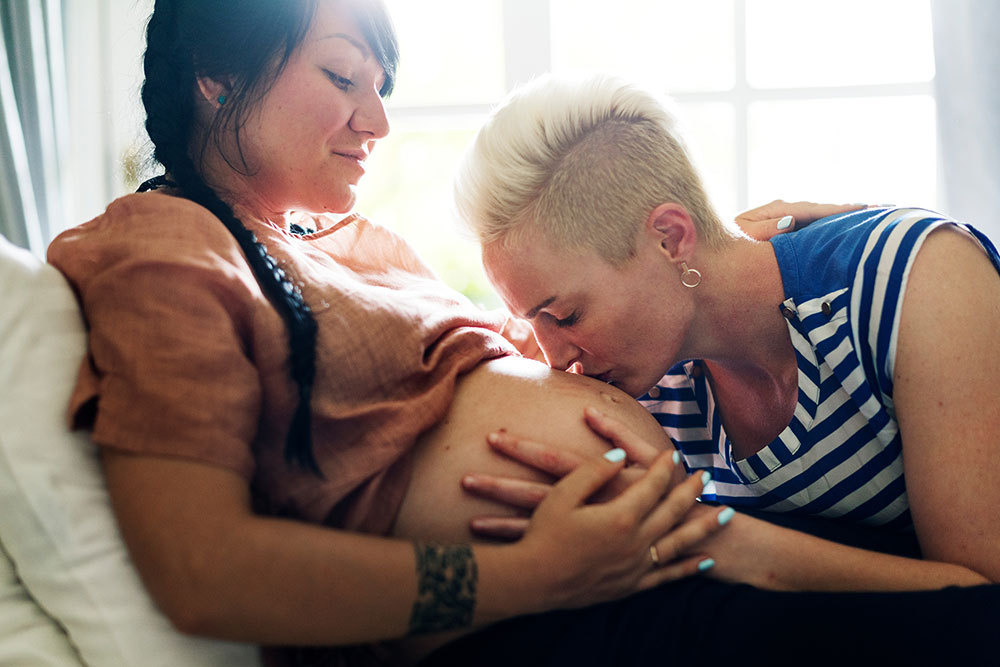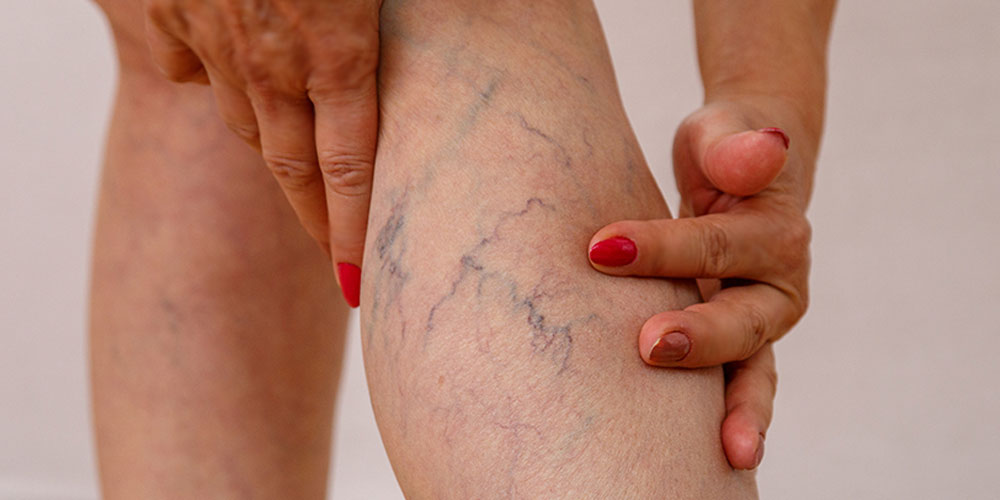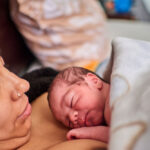Body of Evidence: Pregnancy Changes From the Inside Out

A belly button pop, hormone changes, glowing skin, and a lot of bathroom breaks, to name a few.
Medical Experts: Leah Najima, MD, FACOG; Samantha Weed, MD; Katrina Wu, MSN
To the uninitiated—heck, even to those who have done it before—the actual labor and delivery part of pregnancy seems downright impossible. (I have to fit what through where?!) But as unmanageable as it seems, your body is designed to do exactly that. In fact, it spends roughly 40 weeks preparing for labor, delivery, and parenthood—and you’re just along for the ride. Here’s a rundown of some of the changes your body will undergo and the wonderful, surprising, and yes, seriously uncomfortable side effects of riding shotgun.
Changes to Your Appearance During Pregnancy
Besides those thrilling two lines on the home pregnancy test, the first thing you may notice are changes in your breasts—particularly tenderness and growth. Enlarged breasts are common in the first trimester due to increased levels of the hormones estrogen and progesterone, and their growth will continue throughout pregnancy.
According to Katrina Wu, MSN, the program director of nurse-midwifery at Bethel University in St. Paul, Minnesota, pregnant people often gain about an extra pound in their breasts alone during pregnancy—and that’s not all. Larger, darker nipples and areolas, more visible veins, and leakage of the thick, yellowish substance known as colostrum are all to be expected as breasts prepare for milk production closer to your due date.
As your growing uterus expands to accommodate its new houseguests—baby and placenta—your belly will follow suit, and experiencing aches and pains is normal. Supporting your growing belly and generous new cleavage can make for one serious backache, and it doesn’t stop there. “In preparation for labor and delivery, the ligaments of the pelvis loosen due to a hormone called relaxin, present at 10 times its normal level during pregnancy,” says Leah Najima, MD, FACOG, an OB-GYN at Sierra Women’s Health in Reno, Nevada.
Another outcome many soon-to-be moms experience is the development of stretch marks. These streaks can be barely there or very prominent and can come in an array of colors, including pink, red, brown, black, silver, and purple. The truth is there’s nothing you can really do to totally prevent them, but maintaining a good moisturizing method and trying to keep weight gain slow and steady may help.
That ever-growing belly can also trigger the infamous belly button pop. Samantha Weed, MD, an OB-GYN practicing in Tacoma, Washington, explains, “As the uterus expands, it tends to push the intestines up and out to the sides. From the expansion and pressure, the abdominal wall muscles can start to separate in the midline, which can lead to the belly button ‘pop’ sometimes at the end of the third trimester.”
Don’t worry—however amusing (or alarming) you may find it, odds are good that as your belly shrinks, your outie will return to its former innie status.
The Highs and Lows of Pregnancy Hormones
Expecting parents get a front-row seat on the hormonal roller coaster thanks to sudden, dramatic increases in estrogen and progesterone. Plus, there’s also the added bonus of changes to the amount and function of many other pregnancy hormones. Not only are these hormonal fluctuations critical to fetal development, but they’re also the cause of everything from morning sickness and mood swings to luscious hair and nails.
During pregnancy, hormones can change the ratio of hair follicles that are actively growing and those ready to fall out, making for noticeable growth and thickening. Hair texture and even color variations aren’t uncommon either.
But all that growth isn’t necessarily limited to your mane. Many pregnant people notice sprouting hair on the face, arms, legs, or back. Still, it’s not forever—the growth-loss ratio “shifts in the opposite direction to normalize after the birth,” explains Wu. In fact, from early pregnancy to the end of the first year postpartum, some birthing parents report noticeable hair loss, she says.
All those raging hormones can also have an effect on your skin. Prenatal acne is a common offender that pops up for many pregnant people thanks to boosted oil production. Someone with a history of acne or menstrual flare-ups at the beginning of their cycle is considered to have a higher risk of dealing with it during pregnancy.
Another condition to affect your face is melasma, where increased melanocytes (color-producing cells) create an excess of pigment resulting in dark patches on the forehead, cheeks, chin, and around the mouth. These splotches can get darker as pregnancy progresses, but will generally lighten over time. Not surprisingly, hyperpigmentation is exacerbated by sun exposure, so the use of a daily SPF (and maybe a good hat) is a worthy idea.
Turn Up the (Blood) Volume
During pregnancy, your body is working serious overtime, and all of that effort means a sharp increase in blood volume—up to 40-45% percent. “This volume increase starts in the first trimester and continues steadily until delivery,” says Dr. Weed. To accommodate, your heart works more efficiently to pump blood faster, and your heart rate increases too.

There’s more. “Blood vessels also tend to relax and dilate, mostly due to hormonal changes,” says Dr. Weed. “This is thought to be the cause of the ‘pregnancy glow’ skin change from increased blood flow near the skin’s surface, but it can also cause troublesome varicose veins.”
Hemorrhoids, characterized by bulging veins that actually poke out of the anus (which can be made worse by pregnancy constipation), can be part of that package too. More blood can even mean nosebleeds and nasal stuffiness as mucous membranes swell, clearly one of the less glamorous aspects of pregnancy.
The Physical Experience of Labor
While most of these changes happen over the course of 40 weeks, the pace quickens dramatically as you near the finish line. “No one can say for sure when natural labor may start,” says Wu, “but a pregnant person may notice several changes as that day begins to draw near.” Some people report feeling as though the baby’s head is sinking lower into the pelvis—which can also further increase bathroom breaks.
Another sign is the ripening of the cervix. You may or may not notice, but in preparation for labor, your cervix is doing some pretty amazing stuff. “It’s softer, more pliable, a bit thinner, and may even begin opening,” says Wu. Chalk it up to prostaglandins, estrogen, and relaxin again, but mostly to the increasing pressure of your baby’s little head. “For birthing parents who have had children before, their cervix may even be 2 to 4 centimeters open for the last couple weeks of pregnancy,” says Wu.
While you may think otherwise, it’s typically the pressure caused by contractions—not your baby—that causes your water to break. In less than 15% of pregnancies, ruptured membranes signal the beginning of labor. It’s far more common for these membranes to spontaneously rupture when labor is already well underway.
Contractions are another sign that the party is really getting started, even if they don’t actually lead to labor. “Oxytocin is the hormone released from the brain that causes the uterus to contract,” explains Wu. “Having bouts of contractions is a sign that your uterus is becoming more receptive to oxytocin.”
This rhythmic tightening and relaxing of the uterine muscle is your body’s way of moving your baby down the birth canal and out into the world. As you move through the stages of labor, your contractions will increase in strength, frequency, and length until your cervix dilates to a full 10 centimeters.
Postpartum Body Changes
Immediately after delivery (and also during breastfeeding), your body will continue to release oxytocin in even larger amounts, triggering what’s known as afterbirth pains. These aching, cramp-like sensations, which can last for up to six weeks, are the postpartum contractions of the uterus as it shrinks and moves back to its pre-pregnancy size and location. Not the most comfortable feeling, maybe, but a good sign that your body is returning to its previous state.
Pregnancy is anything but a static condition, and of course, not every body change will be welcome. But however endless it may feel, every pregnancy does eventually come to an end. Soon enough, you’ll be kissing all of these wild changes goodbye and your sweet new baby hello.
This article has been updated since its original publish date on Feb. 1, 2022.







